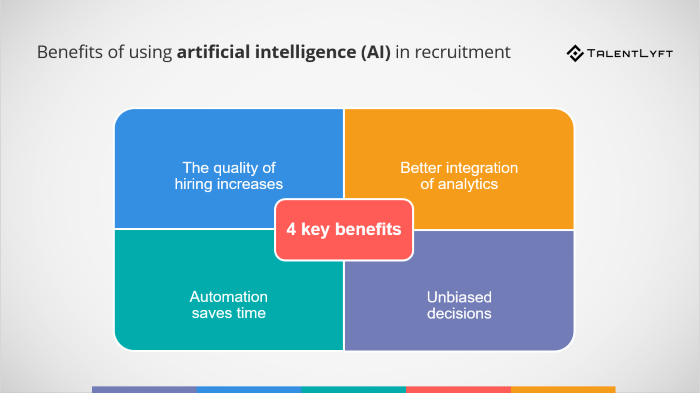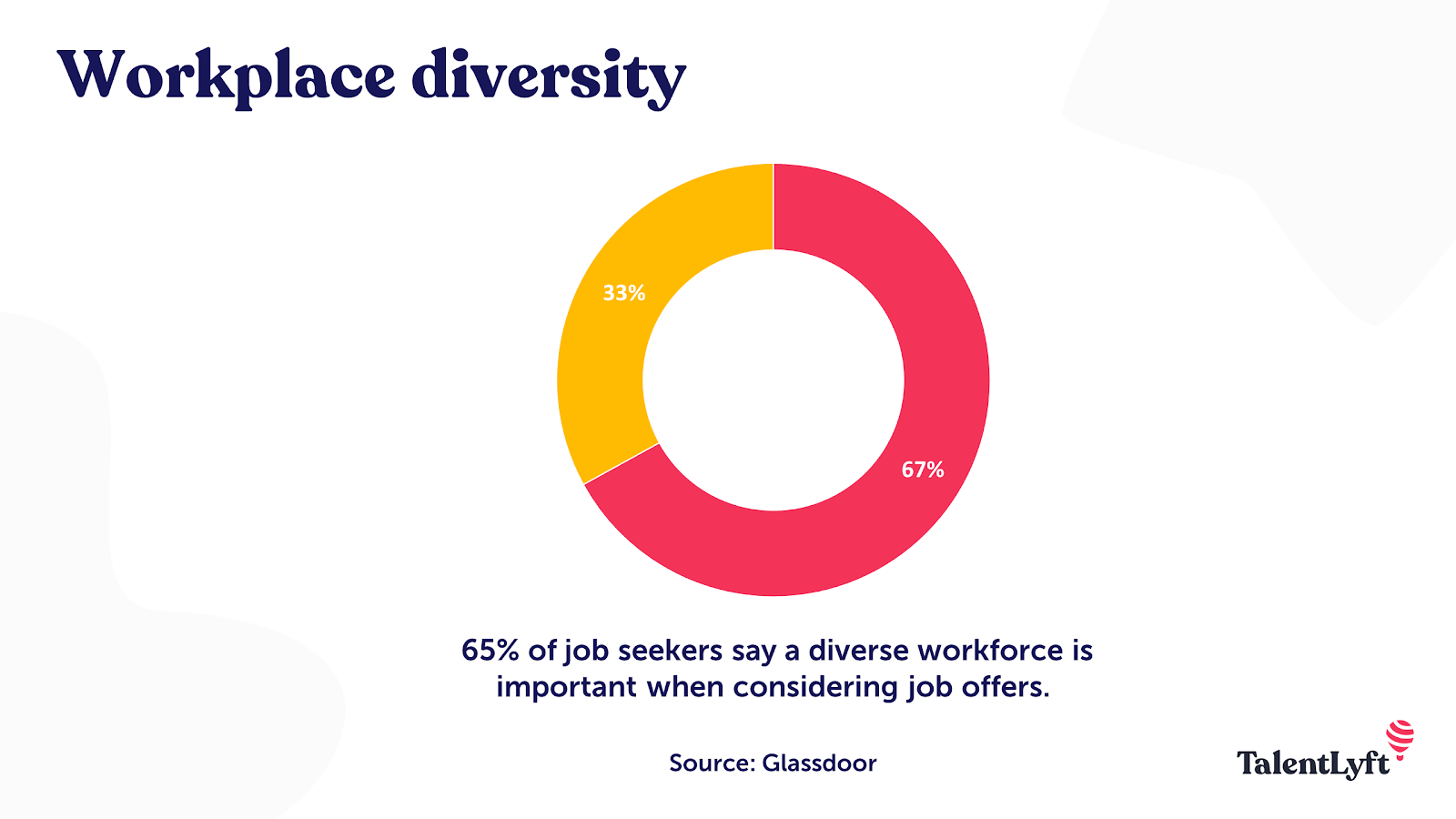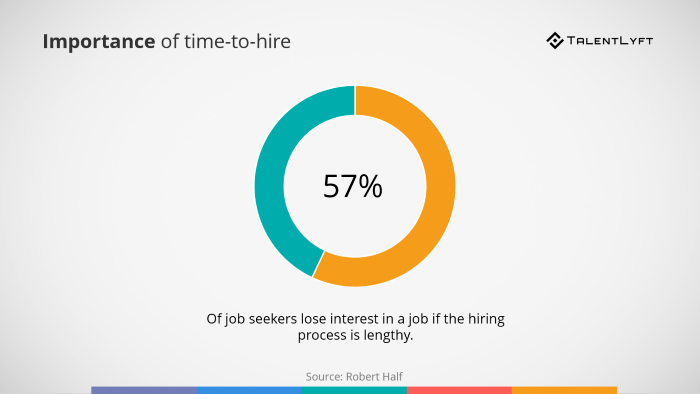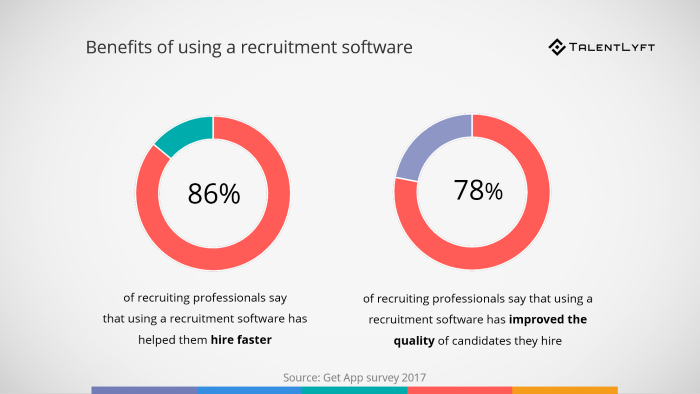Part
01
of one
Part
01
Recruitment Industry
Three trends in the recruitment industry include the growing importance of technology, an increased emphasis on diversity and inclusion in the recruiting process, and the increasing prominence of social media recruiting. Some gaps in the recruiting value chain include a recruitment infrastructure that does not accommodate newer technologies used by job seekers (such as mobile), the impact of candidate experience on company branding, the duration of the process, and gaps that create difficulties in identifying the highest-quality candidates. Details associated with these trends and insights, as well as company summaries of several players in the recruitment industry, are provided below.
TRENDS
Rising Use of Technology in Recruitment Process: AI and Predictive Analytics
- The use of artificial intelligence (AI) in the recruitment industry is considered a leading industry trend, growing in importance in sourcing, screening and assessing job candidates.
- Eric Gregg, CEO of research firm, Inavero, says about the growing importance of technology in recruitment, "More than 70 percent of leaders agree the staffing industry will be transformed by technology and automation over the next five years."
- AI offers the opportunity to increase efficiencies in the recruitment process by automating repetitive tasks, such as resume screening. AI technology can also help provide personalization and automate candidate followup via chatbots. Voice AI is leveraged to analyze and review candidate interviews.
- Predictive analytics go a step further, using data such as past experience, relationship networks, and location, to offer recruiters the ability to select candidates who fit best with a role. Predictive analytics also support "passive recruitment" efforts (identifying strong candidates who may not be actively seeking a job).
- The growing use of AI (as well as predictive analytics) in recruitment is highlighted by numerous industry experts as a top trend, freeing recruiters to build relationships with candidates and providing a positive candidate experience. 67% of recruiters and hiring managers in a recent LinkedIn survey said the use of AI was saving them time.
- In addition to time and efficiency gains, AI also helps improve the quality of hires, allows for analytics to be integrated into the recruitment and hiring process, and reduces biases in the recruitment process.
- HireVue is an AI-driven job interview video platform, used by companies such as Unilever and Hilton, which claims to use sophisticated algorithms to predict the likelihood a potential candidate will succeed in a position. Recently, however, HireVue has come under fire due to lack of transparency and possible bias.
- Vox uses LinkedIn's 'HR Recruiter', a tool that uses AI to rank potential candidates.
- McDonald's has used Alexa to enable candidates to trigger a voice-based job application.
Growing Importance of Diversity and Inclusion in Recruitment Efforts
- Increasing emphasis on diversity and inclusion in the recruitment process is a leading trend in the industry.
- Businesses are expected to personalize job postings to attract more diverse candidates. An increase in the number of recruitment and staffing agencies specializing in diversity is also expected.
- In the United States, Glassdoor found that online job postings related to Diversity and Inclusion (D&I) increased 30% from August 2018 to August 2019, while hiring for D&I-related roles increased 106% from 2018 to 2019 in the UK. Increases in D&I-related roles over the same period were 79% in Germany, and 53% in France.
- Diversity is a trend in the recruitment industry as it offers benefits for employers, while meeting needs of job seekers.
- Glassdoor found that companies who are stronger in racial and diverse executive teams are 33% more likely to demonstrate above average profitability compared to companies with less racial and diverse executive teams. Diversity was cited as one of 9 cultural values having the most impact on financial results among top-performing companies. 71% of employers say they will be hiring a more diverse workforce in the future.
- While large companies have historically led the trend in diversity hiring, Glassdoor predicts diversity hiring among mid-size companies will increase in 2020 and beyond as candidates seek more diverse organizations.
- 22% of employees consider a company's culture and values as the primary factor driving their satisfaction with the workplace and 73% won't apply to a company if its values diverge from their own. Nearly two-thirds (65%) of job seekers highlight workplace diversity as an important factor as they consider job offers.
- There has also been a rise in diversity and inclusion recruitment startups, such as Jopwell, positioned as a recruitment platform designed to support "black, Latinx, and Native American” job seekers as they build their careers.
- Dell Technologies announced a series of culture transformation objectives in November 2019, which included efforts to increase the hiring, development, and retention of women, black/African American, and Hispanic individuals.
Increased Relevance of Social Media Recruitment
- Social media recruitment is a trend that offers employers and recruiters the opportunity to meet potential candidates "where they are." A 2019 CareerBuilder survey of recruiters and hiring managers found that 19% considered social media sites their most valuable technology resource.
- CompanyMatch, a Human Resources tech platform offering services in the Netherlands, Germany, Belgium, Austria and the UK, notes that social media recruitment is a trend for 2020 and beyond. The ability to target passive job seekers and improve engagement of potential candidates are key drivers of this trend.
- Recruitment marketing is predicted to include recruitment hashtags and eye-catching content (often via video) that will capture the attention of potential job candidates.
- According to Glassdoor, the vast majority (79%) of job seekers use social media platforms in their job search, while 84% of organizations say they plan to leverage social media in the future as part of their recruitment efforts.
- 70% of employers said they successfully hired a candidate via social media, while 80% of employers reported social media as a platform that helped them find passive candidates.
- Recruiters use social media platforms to source and recruit millennial candidates, with 91% of millennials saying they are "open to hearing about job opportunities."
- Marriott is one company who has successfully "leaned into" the social recruiting trend, with their career page generating 1.2 million "likes." One unique feature involves a "career chat," which allows potential candidates to get real-time answers about Marriott from current employees.
- Firefish Software, a UK-based recruiting software firm, successfully leveraged Twitter to identify candidates for a job opening, with a "tweet" referencing the role retweeted 6,000 times in a 24-hour period.
VALUE CHAIN INSIGHTS: GAPS AND CHALLENGES
Recruiting Infrastructure Not Keeping Pace With Mobile Usage
- Glassdoor highlights mobile recruiting as a top trend for 2020, as recruiters and employers work to optimize outdated systems and processes, and streamline their mobile job application processes.
- Over half of job-seekers search for potential roles on mobile devices, while more than one-third (35%) of job-seekers claim they prefer to apply for jobs via their mobile device. Mid-career (35-44) job seekers are most likely to use mobile devices in their search and application process.
- Candidates preferring to use a mobile device in the job application process complete 52% fewer applications than those applying via their desktop, suggesting job postings are not optimized for this platform.
- Additionally, it takes 80% longer to complete an application via mobile, a significant barrier in the job application process.
- Optimizing mobile application processes offers significant benefits in the recruitment process, by expanding the pool of potential applicants. Promoting a job opening as "mobile-friendly" increases the number of applicants by 11.6%. A 10% decrease in the time to complete an application results in a 2.3% increase in applications among mobile job seekers.
- Conversely, application processes that are not optimized for mobile could result in a negative user experience as well as a smaller, less diverse application pool.
- Glassdoor's "Easy Apply" is a mobile-friendly, easy-to-use, tool that integrates with applicant tracking systems, exemplifying an approach designed for a positive user experience.
Employer Branding and Candidate Experience Significantly Impacts Ability to Attract Talent
- Strong employer branding is considered critical in attracting the right candidates in the recruitment process.
- Recruiting industry expert, Dea Wilson, highlights employee branding as a top trend in the industry in 2020, and further notes the mission and vision of a company as key to attracting top talent.
- A CareerArc study found that 75% of job seekers consider an employer's brand prior to applying. Relatedly, 72% of job seekers reported posting a negative employer recruiting experience online, which can negatively impact employer branding.
- CompanyMatch discusses recruitment marketing as a means of elevating the employer brand and reaching potential applicants. A 2019 Symphony Recruitment Marketing report found that 55% of Fortune 500 companies have not optimized their recruitment marketing.
- Consulting firm, Exaqueo, promotes the importance of treating job candidates as "consumers" of an employer's brand and identifying the "touchpoints" along the process that will help optimize their experience and perception of the organization.
- Exaqueo also notes experiences should be personalized (e.g., within career sites, in all communications), providing content that resonates with job seekers and engaging them at all steps of their recruitment journey.
- Danny Astral, Director of Sales at Monster, discusses how staffing firms might approach the issue of branding in their recruitment processes: "You not only have to brand your client in your job advertisements and your digital advertisements, but you also have to brand your own organization.”
- With 47% of new job seekers looking directly at companies they are interested in, it is especially important for recruiting agencies to ensure their branding messaging is optimized.
End to End Recruitment Process Is Too Slow
- Despite the trending use of technology to improve efficiencies in the recruitment process, 40% of hiring managers cite "time-to-hire" as a top pain point in the hiring process.
- In fact, a key reason for hiring a staffing company, mentioned by 42% of hiring managers, is to "hire someone more quickly than they could on their own."
- Given the role of technology in improving the efficiency and "time-to-hire" a candidate, 67% of hiring managers feel it is "extremely" or "very" important that a staffing firm has up-to-date technology.
- Google notes that "time-to-hire" (number of days between an applicant applying for an open position and accepting a position) is a critical recruitment metric that directly impacts candidate satisfaction. Robert Half found that 57% of job applicants lost interest when "time-to-hire" was lengthy.
- While "time-to-hire" helps identify inefficiencies in the candidate experience, "time-to-fill" (time from job posting to candidate acceptance) is another key metric that impacts internal teams. HireVue found that the average "time-to-fill" is 42 days, ranging from 14 to 63 days. According to the Society for Human Resource Management (SHRM), the average "time-to-hire" for a position is 36 days.
- "Time-to-hire" benchmarks are fairly similar globally, but somewhat shorter for customer service roles compared to other types of roles.
- Issues driving longer "time to hire" may be associated with scheduling delays, too many interviews with the same candidate, too many unqualified candidates in the pipeline, and delays in hiring manager feedback. "Time to fill" issues may be driven by slow approvals by executives or hiring managers, or having too few candidates in the pipeline.
- Recruitment software was identified as a key factor in shortening the end-to-end recruitment timeline, with 86% of respondents in a "Get App" survey reporting the use of this type of software helped accelerate the hiring process.
Difficulties in Reaching High-Quality Applicants
- According to a 2018 CareerBuilder survey of hiring managers and staffing and recruitment firms, the top recruitment process "pain point", cited by 52% of hiring managers, was "accessing candidates with the right skills."
- Hiring managers work with recruitment firms to improve their access to candidates with "specialized skills" (42%) and to find candidates for positions that are more difficult to fill. Primary staffing firms are hired based on their ability to find a candidate with a niche or specialized skill set (16%) or a reach a high quality candidate (15%).
- Still, over one-quarter (26%) of hiring managers do not work with staffing agencies based on perceptions that they don't have access to the best candidates.
- A new hire is a significant investment for a company, and a non-quality hire can have significant negative financial implications on an organization.
- Leveraging success metrics are one way of developing recruitment processes that emphasize quality hires. A key metric used to understand patterns in quality hires is a success ratio (total successful hires/total hires). Success is typically measured based on performance reviews once the candidate is hired.
- Technology is also considered a key factor in elevating the quality of candidates that are ultimately hired, with 78% of recruiting professionals saying recruiting software has "improved the quality of candidates they hire."
- Predictive analytics in particular is emerging as a tool to improve the quality of hires. Predictive algorithms are able to leverage existing employee data to narrow down candidates and identify those who will fit best with the company and role.
- Koru, a predictive hiring technology startup recently acquired by London-based Capp & Co., provides "candidate fit" scores to help identify the best candidates for a role.
NEWER RECRUITMENT INDUSTRY ENTRANTS
Beamery
- Founded in 2013, Beamery has primary offices in London, UK, San Francisco, CA, and Austin, TX, with other field offices around the globe.
- Beamery offers a talent "operating system" designed to optimize the recruitment process by linking quality candidates with employers, and by providing a more seamless experience for both the candidate and recruiter.
- Their platform helps clients "attract, engage, and retain world-class talent, power best-in-class candidate experiences, and manage the entire journey with one platform." Beamery's mission is to transform the "future of work", by helping "companies build deeper connections with candidates, where they create phenomenal talent experiences, and where they hire the people that will ultimately make their business a success."
- Beamery offers that their platform will make it easier for more candidates to participate in the recruitment process, providing a diversity benefit, in addition to convenience.
- Beamery's recruitment platform provides benefits that cover the end-to-end recruitment process and capitalize on many current industry trends. "Attract" involves helping clients build their brand and provide personalized candidate experiences, "Engage" supports efforts to proactively recruit high-quality candidates, and "Retain" involves mobilizing internal talent to drive a strong end-to-end recruitment experience.
- The Attract component involves setting up micro-sites on a company website that links to Beamery. It also includes an event-planning tool to facilitate programs such as college recruitment fairs.
- The Engage tool offers a CRM database and additional marketing tools.
- The Retain component supports existing employees in their search for internal roles, with survey support to manage feedback for process optimization.
- Sultan Saidov, Beamery Chief Product Officer, describes the technology underpinning the platform as a "human contact-centric relationship management system that is coupled with a marketing automation process, which means that every candidate can have a personalised interaction and no candidate gets left behind, and companies are able to deliver better candidate experiences."
- Craft notes that the company uses machine learning technology to aid in recruitment prioritization efforts.
- According to CEO, Abakar Saidov, Beamery has raised $40 million in funding to date.
JobHopin
- Founded in 2017, JopHopin is a Vietnam-based job recruitment platform serving southeast Asia.
- JobHopin has 1.4 million job candidates in their database and works with 2,000 enterprise clients.
- The company's messaging focuses on its use of technology to optimize the candidate identification and selection process: "From setting up your new team in Vietnam to hiring the right talents, we’ve got your back. With cutting-edge AI and Machine Learning technology, we will help you find the best talents in Vietnam."
- The key advantages of JobHopin include offering an omni-channel solution to streamline the recruiting process, an automated candidate matching process to identify qualified candidates, and technology which provides a lower cost, faster recruitment solution ("smarter, cheaper, faster").
- JobMatch, positioned as a "smart recruitment platform", highlights efficient recruitment and qualified applicants across 20 channels. A separate recruitment service is branded "JobHunt", showcasing their ability to support the recruitment of highly-qualified, senior-level candidates.
- Their AI-matching algorithms analyze keywords and extract key data from job postings to identify the best talent for the roles. The company notes the importance of accurate details in hiring descriptions in matching the best talent with the role.
- The company also offers real-time analysis of salaries, talent supply, and hiring demand. This information can be integrated into third-party platforms, such as third-party job portals.
- JobHopin has raised $3.2 million to date.
PMI
- PMI is a project management professional association focused on "innovation, transformation, progress, advancement, and social good."
- Headquartered in the United States, the organization has members in 208 countries.
- They offer resources, tools, networks, and research to those in the portfolio, project, or program management profession.
- PMI strives to support stakeholders throughout their careers.
- Their services include certification programs, academic and market research programs, and volunteer and professional development opportunities. Their primary revenue sources include dues, professional exam fees, conferences, book sales, and advertising.
- Projectmanagement.com is part of PMI, offering a "one-stop-shop" to address project management challenges, including a network of 800,000 peer connections and experts.
- The company also offers thought leadership and conferences associated with talent management, including the Talent and Technology Symposium, which provides leadership tools for risk management, communication, and emotional intelligence.
- According to their annual report, their 2018 revenue was $172 million in program revenue and $236 million in supporting service revenue.
Research Strategy
There was considerable information surrounding recruitment industry trends published by industry experts and recruitment organizations. We selected trends based on their consistent appearance across multiple sources. Value chain insights were based on identifying challenges and gaps in the recruitment process, supported by multiple pieces of data and statistics from surveys and industry experts. Finally, we identified 3 companies in the recruitment industry, 2 of which are newer "startup" entrants in the industry. We also provided a company analysis of PMI.org, though we were only able to uncover information about the company peripherally related to the recruitment industry (certifications, training, talent conferences and thought leadership), evaluating both PMI parent organization and the projectmanagement.org subsidiary.






